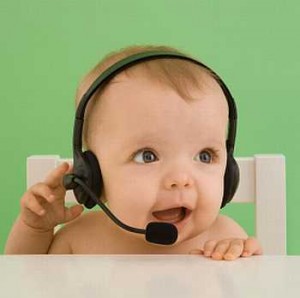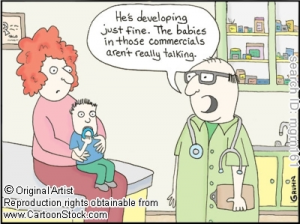Dispelling Speech and Language Therapy Myths
When you first begin to research speech therapy and speech disorders, chances are you will come across some misguided information. You might hear that your child will likely grow out of his speech disorder, that you should never use “baby talk” with an infant, or that living in a bilingual household is detrimental to your child’s language development. When in doubt, never hesitate to ask your child’s speech therapist about these issues.
Myth 1: Speech Therapists Only Treat Stutters and Lisps
Stutters and lisps are two of the most well-known speech disorders. The former was even featured prominently in a Hollywood blockbuster, “The King’s Speech.” However, speech-language pathologists (SLPs) treat a wide range of language impairments, from apraxia and aphasia to cluttering and dysphagia.
Myth 2: Your Child Will Grow Out of It
Some children do indeed grow out of a developmental delay. Unfortunately, there is no way to know for sure if your child will grow out of his language impairment. It’s always best to play it safe and have your child evaluated and treated as soon as possible.
Myth 3: Speech Therapy Is Really Just More Playtime
Speech therapists often take the naturalistic approach to speech therapy. This means that they blend playing with teaching. If an SLP is working on the “d” sound with a child, she might introduce the child to a doll. For the “t” sound, toy trucks might be used. Playtime is particularly helpful for teaching children because they are more likely to be engaged in the learning process. Parents can stimulate learning and language development by bringing their children to museums, reading with them, and encouraging them to ask questions.
Myth 4: Siblings of Speech Disordered Children Are Likely To Develop a Speech Disorder
The sibling of a child with a speech disorder is no more likely to develop a speech disorder himself. Children hear many people speaking around them on a regular basis, including their parents, teachers, daycare workers, and random people at the grocery store or mall. There are many more positive influences on your child’s language development than negative influences.
Myth 5: Using “Baby Talk” Impedes a Child’s Language Development
It’s perfectly natural to use baby talk with an infant. Infants pay more attention to voices that are higher in pitch and to exaggerated gestures and facial expressions. Baby talk naturally lends itself to these characteristics. Babies also enjoy the rhythm of baby talk. The shorter, simpler sentences and frequent word repetition helps them begin to learn language.
Myth 6: Bilingualism Lends Itself to Speech Disorders
Children who grow up learning a second language may enter a phase in which they do not speak as frequently as they used to. This is perfectly normal – the child is working on learning new grammar rules and new words. The language development milestones for bilingual children remain the same. Periodically, a bilingual child may mix vocabulary of the two languages, but this is not indicative of a speech disorder.





